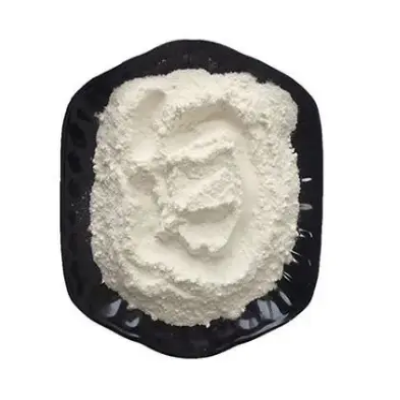cytosine-1-beta-D-arabinofuranoside CAS:147-94-4
Cytosine-1-beta-D-arabinofuranoside, often referred to as ara-C or cytarabine, is a synthetic nucleoside analog derived from cytosine. The modification of the sugar moiety to an arabinofuranosyl structure significantly influences its pharmacokinetic properties, enhancing both its stability and therapeutic efficacy compared to natural nucleosides. Ara-C is predominantly employed in oncology, specifically for treating acute myeloid leukemia (AML), acute lymphoblastic leukemia (ALL), and certain types of non-Hodgkin lymphoma. The primary mechanism of action for cytarabine involves its incorporation into DNA during replication. Once administered, ara-C is phosphorylated to its active triphosphate form (ara-CTP), which mimics deoxycytidine triphosphate (dCTP). This allows it to compete with dCTP for incorporation into the growing DNA strand. However, once incorporated, ara-C disrupts the normal function of DNA polymerase, leading to chain termination and subsequent cellular apoptosis. This selective targeting of rapidly dividing cancer cells makes cytarabine particularly effective in treating hematological malignancies. In addition to its direct antitumor effects, ara-C is also associated with myelosuppressive side effects, which can limit its therapeutic use. To mitigate these effects, various combination therapy regimens have been developed, often incorporating other chemotherapeutic agents to enhance efficacy while minimizing toxicity. Research continues to explore formulations of cytarabine that improve its delivery and reduce side effects, including liposomal preparations and novel combinations with targeted therapies. Despite the challenges associated with its use, cytarabine remains a fundamental agent in chemotherapy protocols and a subject of ongoing investigation aimed at maximizing its therapeutic potential. Overall, cytosine-1-beta-D-arabinofuranoside exemplifies the vital role of nucleoside analogs in cancer therapeutics, reflecting the continuous evolution of strategies in the fight against malignancies.



| Composition | C9H13N3O5 |
| Assay | 99% |
| Appearance | white powder |
| CAS No. | 147-94-4 |
| Packing | Small and bulk |
| Shelf Life | 2 years |
| Storage | Store in cool and dry area |
| Certification | ISO. |









